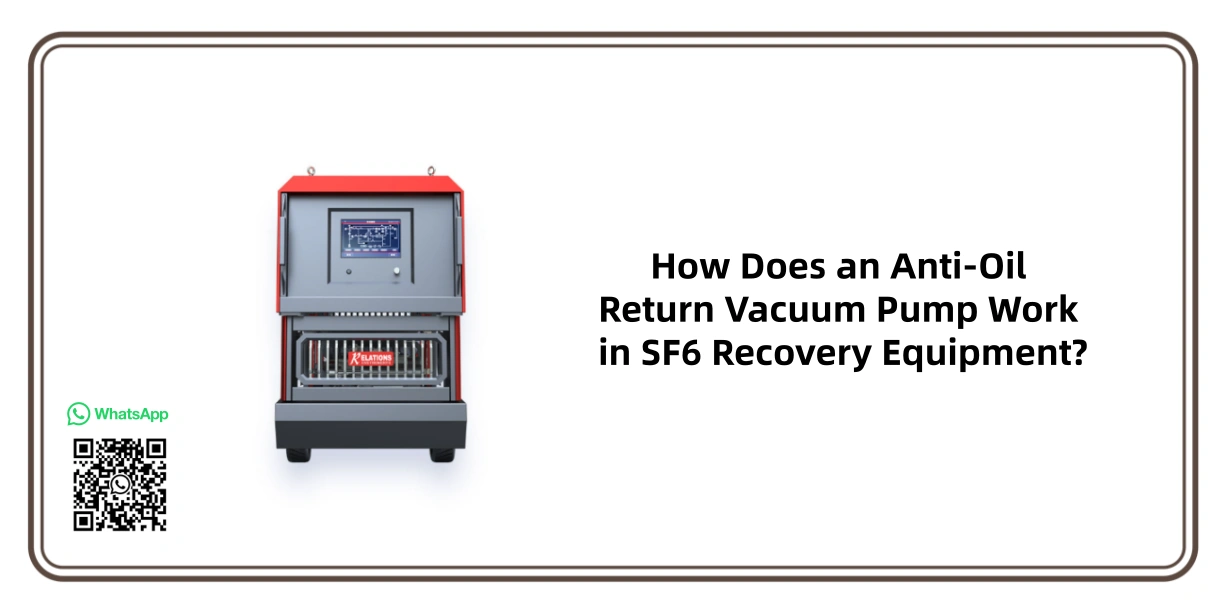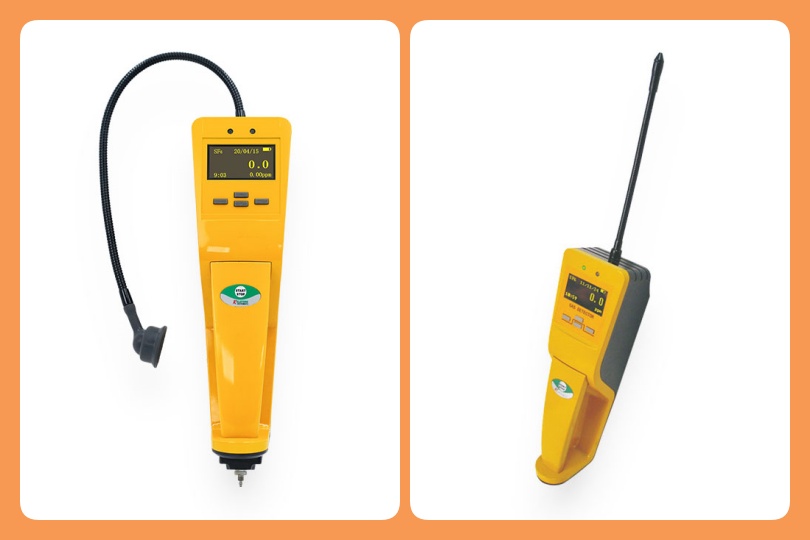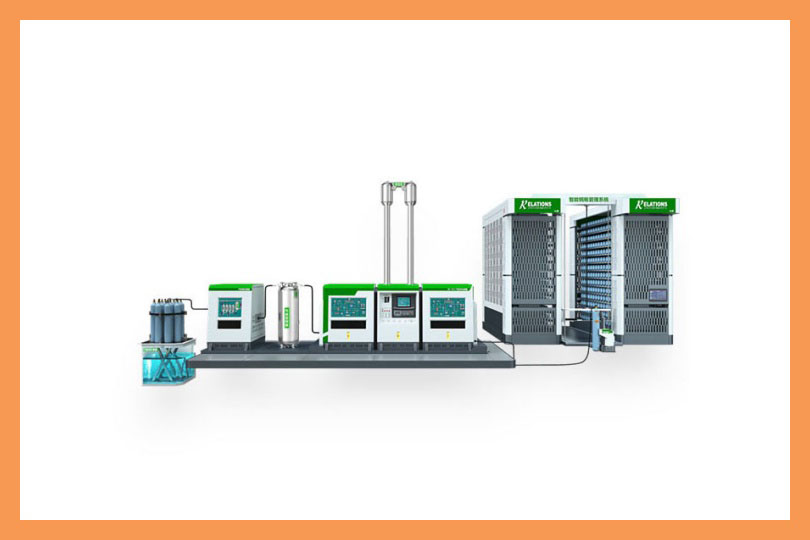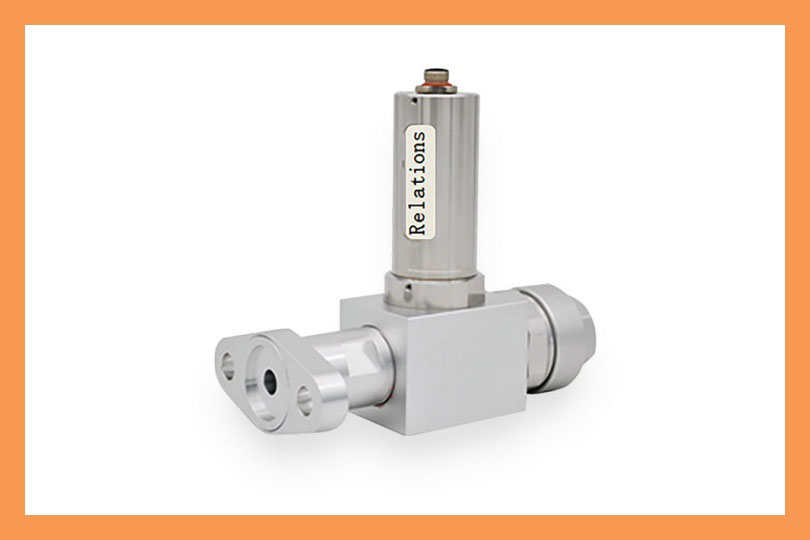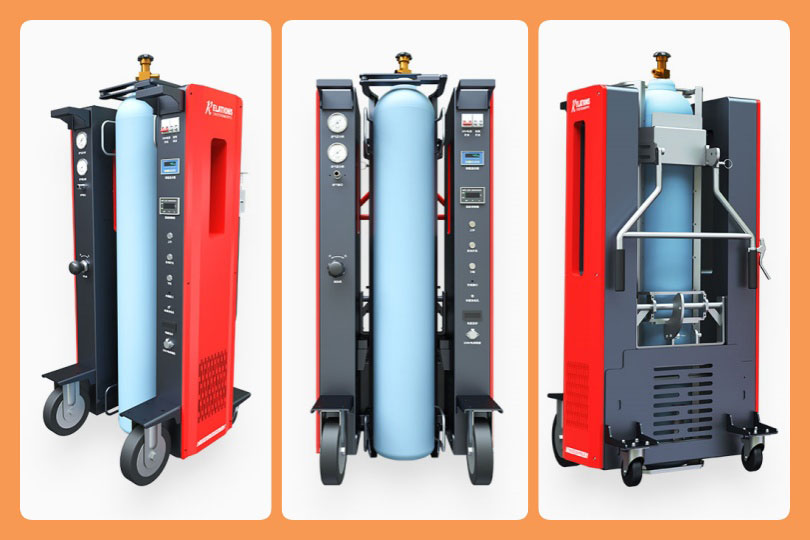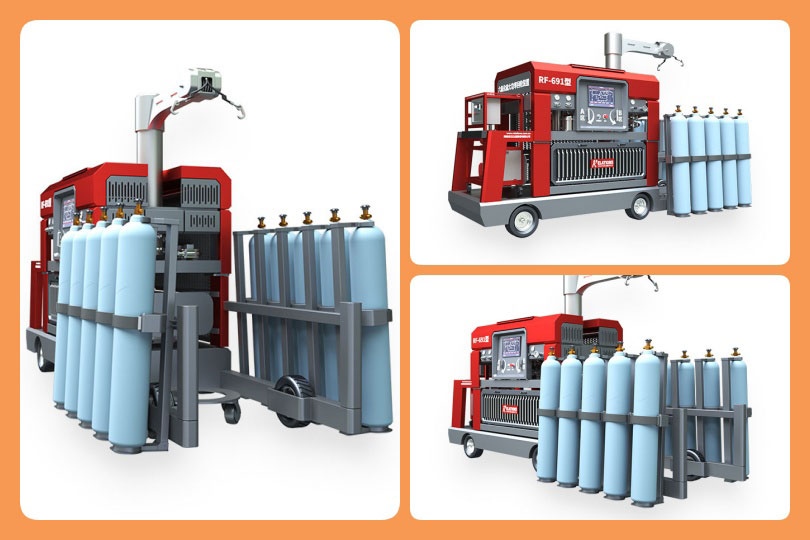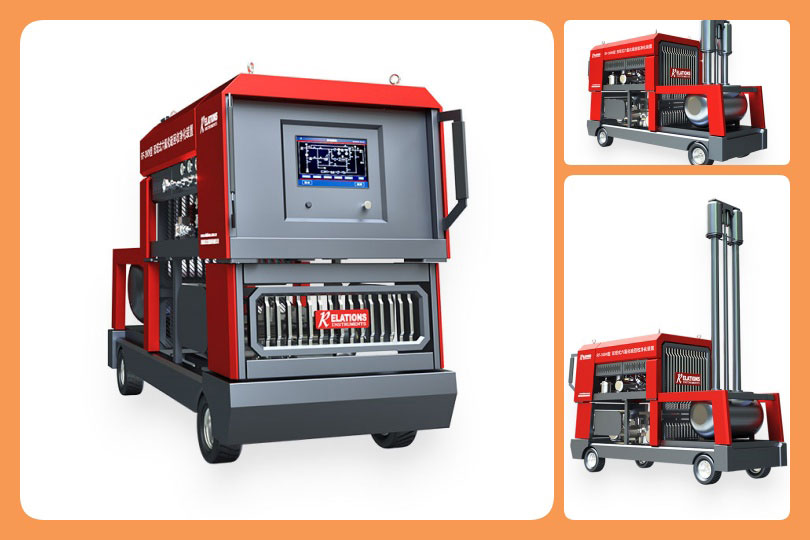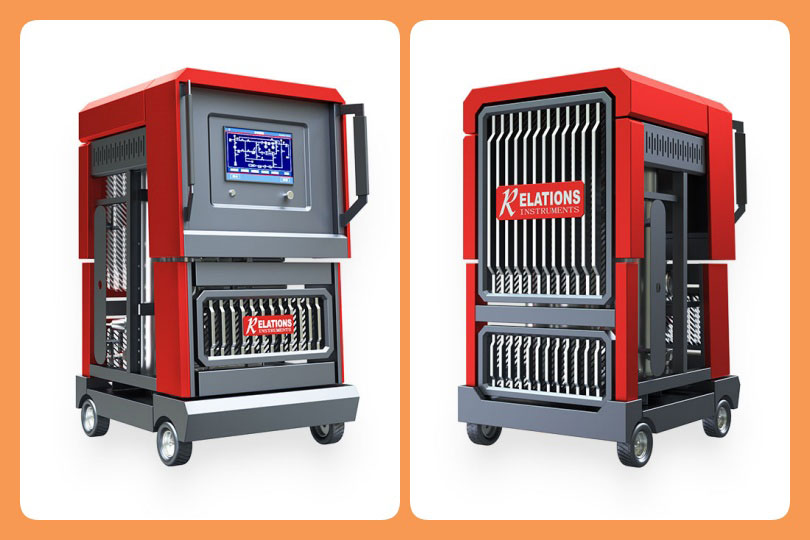How Does an Anti-Oil Return Vacuum Pump Work in SF6 Recovery Equipment?
Date
2025-09-25
[email protected]
Website
www.sf6gasdetector.com
Get Solutions And Quotes
How Does an Anti-Oil Return Vacuum Pump Work in SF6 Recovery Equipment?
SF6 (sulfur hexafluoride) is a critical insulating and arc-extinguishing gas widely used in high-voltage electrical equipment like circuit breakers and transformers. However, SF6 is a potent greenhouse gas, so recovering, purifying, and reusing it is essential for environmental protection and cost savings. SF6 recovery equipment is the core tool for this process, and the anti-oil return vacuum pump stands out as its “heart”—it ensures the system maintains a high vacuum to extract SF6 efficiently while preventing oil contamination. Below is a detailed breakdown of its working mechanism, role, and key considerations.
1. The Core Process of SF6 Recovery Equipment: Why a Vacuum Pump Is Necessary
Before diving into the anti-oil return vacuum pump’s work, it’s vital to understand the SF6 recovery workflow. A typical SF6 recovery system includes four stages: suction, dehydration, compression, and storage.
When recovering SF6 from electrical equipment, the first step is to create a low-pressure environment in the target device (e.g., a circuit breaker). This is where the vacuum pump comes in: it extracts air, moisture, and residual gases from the equipment and the recovery pipeline. If the system cannot reach a high vacuum (usually below 50 Pa), air and moisture will mix with SF6 during recovery—reducing SF6 purity, corroding the equipment, and even affecting its insulating performance.
Ordinary oil-sealed vacuum pumps, while effective for creating vacuum, have a critical flaw: when the pump stops or the system pressure fluctuates, oil in the pump’s lubrication system may flow back into the recovery pipeline or the target electrical equipment. This “oil return” contaminates SF6 and damages sensitive components. The anti-oil return vacuum pump solves this problem with specialized design, making it indispensable for SF6 recovery.
2. Working Principle of the Anti-Oil Return Vacuum Pump
The anti-oil return vacuum pump is an upgraded version of the traditional oil-sealed rotary vane vacuum pump, with additional anti-oil return mechanisms. Its operation can be divided into three key stages, each integrating anti-oil return protection:
Stage 1: Vacuum Creation (Air Extraction)
Like standard rotary vane pumps, the anti-oil return model uses a rotating rotor with sliding vanes inside a cylindrical chamber. As the rotor spins (driven by an electric motor), the vanes slide outward due to centrifugal force, creating sealed “working chambers” between the rotor and the chamber wall.
When a working chamber aligns with the inlet port (connected to the SF6 recovery pipeline), the chamber’s volume expands, pulling in air, moisture, and residual SF6 from the target equipment.
As the rotor continues to rotate, the working chamber moves away from the inlet, and its volume shrinks. This compresses the gas inside until the chamber aligns with the outlet port (connected to a gas treatment unit), pushing the compressed gas out of the pump.
During this stage, the pump’s oil system lubricates the rotor and vanes, seals gaps (to maintain vacuum tightness), and cools the components—just like ordinary oil-sealed pumps.
Stage 2: Anti-Oil Return Protection Mechanisms
The key difference between an anti-oil return pump and a standard one lies in its built-in safeguards against oil backflow. These mechanisms activate in two critical scenarios: when the pump stops and when system pressure drops unexpectedly.
(1) Check Valve (One-Way Valve)
A high-precision check valve is installed between the pump’s inlet port and the recovery pipeline. This valve only allows gas to flow into the pump (from the pipeline to the pump chamber) and blocks reverse flow.
When the pump is running: The negative pressure inside the pump chamber pulls the check valve open, enabling gas extraction.
When the pump stops: The pressure in the recovery pipeline (or target equipment) becomes higher than the pump chamber’s pressure. This pressure difference pushes the check valve shut instantly, preventing oil in the pump from flowing back into the pipeline.
(2) Oil Separator and Pressure Balance Chamber
Many anti-oil return pumps also include an oil separator at the outlet port. This component separates oil mist from the exhausted gas and returns the oil to the pump’s oil sump—reducing oil loss and preventing oil from entering the gas treatment unit.
Some advanced models add a pressure balance chamber between the oil sump and the inlet. If the system pressure drops suddenly (e.g., due to a pipeline leak), the balance chamber regulates the oil pressure, stopping oil from being sucked into the inlet by negative pressure.
Stage 3: Sustained Vacuum Maintenance
In SF6 recovery, the pump often needs to run continuously for hours to maintain a stable high vacuum. The anti-oil return design ensures that even during long operations:
The check valve remains tightly sealed (no oil leakage).
The oil level in the sump stays stable (thanks to the oil separator), ensuring consistent lubrication and sealing performance.
The pump can restart safely without oil return—critical for batch recovery of multiple electrical devices.
3. Why Anti-Oil Return Design Is Critical for SF6 Recovery
SF6 has strict purity requirements: even trace amounts of oil can reduce its insulating strength and cause corrosion in electrical equipment. Without an anti-oil return vacuum pump:
Oil contamination would render recovered SF6 unusable, increasing replacement costs.
Oil in the target equipment (e.g., circuit breakers) could damage internal components, leading to costly repairs.
The recovery system’s dehydration filter would become clogged with oil, reducing efficiency and shortening service life.
The anti-oil return pump directly addresses these risks, ensuring SF6 recovery meets industry standards (e.g., IEC 60480) for purity and safety.
4. Daily Maintenance Tips for Anti-Oil Return Vacuum Pumps
To keep the pump working effectively in SF6 recovery equipment, follow these maintenance steps:
- Check Oil Level Regularly: Maintain the oil level between the “min” and “max” marks on the oil sight glass. Use only vacuum pump oil recommended by the manufacturer (do not mix different oil types).
- Replace Oil Periodically: Change the oil every 500 hours of operation or if the oil turns dark (contaminated by moisture or impurities).
- Inspect the Check Valve: Every 6 months, disassemble and clean the check valve to ensure it closes tightly. Replace worn seals or valves immediately.
- Clean the Oil Separator: Remove and clean the oil separator’s filter element quarterly to prevent oil mist from escaping.
- Test Vacuum Tightness: After maintenance, run the pump for 30 minutes and use a vacuum gauge to verify it reaches the required vacuum level (≤50 Pa for SF6 recovery).
The anti-oil return vacuum pump is a cornerstone of SF6 recovery equipment. By combining the air-extraction efficiency of traditional rotary vane pumps with check valves, oil separators, and pressure balance chambers, it prevents oil contamination while maintaining a stable high vacuum. For electrical utilities and SF6 handling professionals, understanding its working principle and performing regular maintenance is key to ensuring efficient, safe, and environmentally friendly SF6 recovery.
